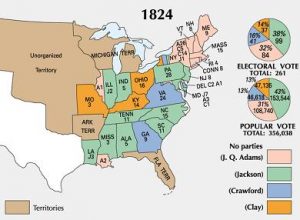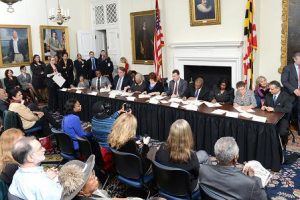This is mark Joseph “young” blog entry #175, on the subject of Climate Change Skepticism.
It has happened to me again: I posted a link to an article, and quickly got embroiled in an ar–er, a discussion which was going to require more of a response than could easily be managed in a Facebook thread. So here I am attempting to answer here comments made there, and it will be necessary to get you up to speed in case you missed all of that.
First, I should refer to the articles in question–but as I have since realized that The Boston Globe, original publisher of these articles, permits a limited number of free article views and then charges a weekly subscription fee, and I referenced two, I should summarize the sense of the articles along with the links. I made that point that these were published in The Boston Globe, a paper never known to be particularly conservative.
The first article is Why are climate change models so flawed? Because climate science is so incomplete. It was produced by staff columnist Jeff Jacoby (March 14th, 2017), and was defending a comment made by the new Environmental Protection Agency Director Scott Pruitt. When asked (on CNBC) whether he believed it had been proven that CO2 was the primary control knob for climate, Pruitt replied that “measuring with precision human activity on the climate is something very challenging to do, and there’s tremendous disagreement about the degree of impact. So no–I would not agree that it’s a primary contributor to the global warming that we see. But we don’t know that yet. We need to continue the debate and continue the review and the analysis.”
This stirred a huge reaction as liberal environmental activists called Pruitt a “denier”, but Jacoby says Pruitt gave the correct answer to the question that was asked. Jacoby then notes that the factors impacting climate run into the hundreds, few if any of which are well understood by present science. He concludes “That is why calls to radically reduce carbon emissions are so irresponsible–and why dire warnings of what will happen if we don’t are little better than reckless fearmongering.”
I presented much the same conclusion sometime last year in web log post #80: Environmental Blackmail, which you can read for free, although (quick commercial break) your contributions through Patreon or PayPal.me are greatly appreciated.
The second article was a letter from a reader, Patrick Moore (March 27th, 2017), extolling the good sense of the first article, 10,000 years ago? That was climate change. Today? Not so much. Identifying himself as “a lifelong ecologist and environmentalist” he says “much of the environmental movement [has been] hijacked for the purpose of alarming us about the future of the climate” and “no weather event or change in climate during the past century is anywhere near out of the ordinary with the climate of the past 10,000 years”. Certainly it is possible that someone might want to label the writer a “denier” with no interest in the environment, but he has been identified as a former president of Greenpeace Canada, so I at least would be hesitant to challenge his credibility on the subject.
Most of my point was made in my previously mentioned article. I favor sound environmental policy; I distrust climate change extremism for a host of reasons. When it comes to trusting current scientific opinion, it should be noted that over the past century what was current scientific opinion said that smoking was good for your health, margarine was better for your heart than butter–well, the fact that current opinion happens to wear the label “scientific” does not alter the fact that it is still current opinion. It was not that long ago that current scientific opinion included that the production of greenhouse gasses was necessary to prevent the recurrence of an ice age. We do not know to what degree humans are impacting climate change; we know that climate change happens naturally (Greenland actually was a more comfortable place than Iceland when Vikings first discovered and named it, but has since become considerably colder), but not to what degree we matter to it. Climate change alarmists are using scare tactics to gain support for their environmental program, and in the process lining their own pockets. The facts are not so clear as they would like them to be.
So that brings you up to speed, and now I have comments I need to address from three persons.
Nikolaj found the article “mostly…reasonable”, but asked
Why would it be irresponsible to keep in account that it might be true? Wouldn’t it be less responsible to blatantly ignore the fact that we might be ruining our climate because it’s hard to prove it?
I might be missing the point, but wouldn’t it be like looking at w[h]ether or not to provoke a nation that might have a nuke, or might not, and choosing to provoke, because, hey, they might not have one?
Well, let’s start with the second part.
Any nation might have a nuke. Indeed, any faction, any terrorist organization, any militant group might have a nuke. True Lies is certainly not the only movie in which a core part of the plot is that some unknown splinter group obtained a couple of nuclear weapons. We think it unlikely that anyone who is not a nation has such a device, but we have several instances in which graduate physics students have drawn up plans for functional explosive devices, and no one controls all of the high-grade fissionable material in the world.
So when you say that a nation “might have a nuke”, you obviously mean more than that there is a theoretical possibility (at least, I hope you do). You mean that a sane assessment of the situation has yielded a probability that reaches some threshold considered significant. What that threshold is might depend on whom you ask. Certainly most people would be cautious if the probability was eighty percent or better; some people would be cautious if the probability reached twenty percent, and some would consider a probability of two percent significant enough that caution is required.
Yet what do we mean by “choosing to provoke” versus exercising caution? World War II was not so long ago, and what was significant in the preface to World War II was that World War I was still fresh in the minds of everyone in leadership. Hitler took the view that if he demanded that territory claimed by other sovereign nations should be ceded to Germany because it was once German territory, and threatened to start a war over it if it were not done, his demands would be met; Chamberlain took the view that as long as England’s immediate interests were not threatened Germany could have anything it wanted to avoid a war. What if we had a similar situation in the modern world–if perhaps North Korea said that it had an arsenal of nuclear weapons and an intercontinental delivery system of some sort, and it wanted immediate ownership of South Korea, then further demanded Japan, Taiwan, and other western Pacific nations? The question is, how high a probability would we require before we took those threats seriously and considered acquiescing to those demands? If we thought it ninety percent likely that North Korea could and would carry through on those threats, that would be a very different situation than if the analysis said two percent.
The problem with the climate change issue lies in this analysis. Climate change extremists argue that there is near a one hundred percent chance that our current production of greenhouse gasses will result in an ecological disaster in a very short time. It is so far from clear that this is an accurate (or even unbiased) assessment of the danger. If the probability really is high, then it calls for more drastic measures; if it is not so high, we should approach it more moderately–and remember, about a quarter of a century ago (probably within the lifetimes of everyone participating in this discussion) there was a serious scientific concern that human production of greenhouse gasses was needed to prevent drastic climate change. The issue is not that clear.
So to return to the first part of the quote, no one is suggesting that we “blatantly ignore the fact that we might be ruining our climate”. The extremists want you to think that there are only two possible paths–drastic measures or business as usual. Those are not the only options.
The situation is also impacted by the fact that nothing in the world happens in a vacuum. That is, there are environmental problems, and they need to be addressed. There are also economic problems that need to be addressed, and social problems, infrastructure problems, political problems–problems of all kinds. So what constitutes a reasonable response to the environmental problem? Should we divert all monies currently going to social service programs such as Welfare, Social Security, Medicare/Medicaid, Food Stamps, Housing Assistance, and put this into programs to reduce carbon emissions? (After all, saving the lives of the poor today is meaningless if their grandchildren will all die in our ecological catastrophe.) Should we shut down all transportation systems that use any form of energy that relies on any kind of combustion–cars, planes, trains, trucks, buses? Remember, hydroelectric is a very small percentage of our electric grid, and we have stifled the development of nuclear power, so even our electricity is dependent on burning something.
The issue is determining how serious the threat to the environment is, and what steps would actually be effective in reducing it without doing more damage to other problems. The answer is not to forget about every other problem the world faces and focus every resource on doing something we are not even completely certain will help. It is to work out the severity of the problem and the best approach to solutions.
Hopefully that covers most of what I needed to say, and my responses to my other two participants will be shorter. Harry said
Even if everything…turned out to be false[–]why does that make sustainable energy and cleaning up the planet somehow a *bad thing*? Why does it make pumping coal dust into the atmosphere and bringing back acid rain somehow something we should be *trying to do* by doing away with the regulations that got rid of that stuff in the first place?
Again we have the suggestion that the extremes are the only options. I am entirely in favor of developing sustainable energy and maintaining reasonable controls on air pollution. I am not in favor of taking drastic steps that will crush the economy in the name of doing something whose benefit to the environment is inconclusive. Zero emissions does not happen even with zero production–we cannot even cook our food without producing some greenhouse gasses, and there are a number of fundamental natural processes (forest fires, volcanic activity) which we cannot control. The issue is what is an acceptable level at a reasonable cost. As a sub-point of that, if the economy is crashing, do we loosen environmental regulations temporarily to stimulate recovery? That’s a more difficult question than I can readily answer, but the answer lies in exactly the kind of analysis we are discussing for the reverse: will the benefit to the economic problem be worth the cost in environmental problems?
I don’t favor drastic steps in either direction. For one thing, drastic changes usually have drastic unanticipated side effects, and if we can move slowly in our efforts to find the right policy, we are more likely to reach a working program that preserves the environment without destroying the economy.
Bryan wrote
even those whose income is dependent upon fossil fuels will admit that it’s a finite resource. Eventually it runs out, and if we don’t have robust alternatives in place by the time it does, we’re going to be in trouble.
Yes, and no one that I know is saying we should not be working on them.
When I was in college I went to hear an advertised debate about nuclear power. The debaters were to be one of our biology professors and one of our physics professors. The biology professor’s starting position was that nuclear energy was extremely dangerous, bad for the environment, and that we should be changing to solar power as rapidly as we can, not investing in dangerous nuclear power plants. The physics professor said that that was a wonderful notion, but he had gotten his doctorate in solid state electronics and knew that the technology was just not there–there would not be significant solar electricity for years, probably decades, and particularly not in the relatively dark latitudes of New England (where Gordon College is located). Meanwhile, the alternatives were all dangerous. He had nightmares about the way liquid natural gas was transported and delivered. Nuclear power had problems, but it had benefits–some of them environmental.
O.K., in the United States nuclear power lost that debate, probably because of the accident at Three Mile Island. It was not helped by Chernobyl. France used nuclear generated electricity for a significant part of its power (about 40% of its total energy, over 75% of its electrical production, in 2004), apparently safely. We’re also talking about the state of solar technology in 1975; those needed decades have now passed. Solar energy is now emerging as a viable energy source–but it is not going to replace fossil fuels overnight.
There is an economic tipping point. I think we have not quite reached it. A tipping point is a simple concept. Usually old technologies become less practical over time; always new technologies improve and so become more economical over time. Capitalists, whether industrialists or homeowners, want to use whatever is the cheapest option. There are two obstacles. One is fluctuation–neither the increase in cost of the old nor the decrease in cost of the new is going to be consistent (the price of natural gas fell drastically over the past decade)–the other is the changeover cost (I might know that gas heat is less expensive than oil, but have to factor in the cost of replacing the furnace and laying the pipe). However, once the price of the new is sufficiently below that of the old to cover the transition costs, people change.
When people are not changing, it demonstrates that they are not persuaded that the new is the better option. The change is starting, and the tipping point is approaching–and government programs to make solar available more cheaply are helping, but also demonstrating that there is still an economic barrier. That is, if solar power actually were economically better than other options, we would not need artificial (government) inducements to switch.
By all means, let’s find better ways to create electrical power. However, let’s not crush the economy trying to do it. Let’s make environmental concerns one of our issues, but not our only issue.
I’m puzzled as to why “conservatives” are opposed to “conservation.”
They’re not. They’re opposed to making it more important than everything else. Nor are conservatives necessarily all climate change “deniers”–only skeptics, people who believe that the jury is still out, that we do not know what the climate is actually doing nor why it is doing it. Maybe the world is warming, returning to the climate which prevailed two thousand years ago before it entered an abnormally cold stretch. Maybe we are contributing to that, and maybe we aren’t. Let us not “go off half-cocked”, creating a lot of other problems in other areas trying to create solutions for a situation we are not completely certain is a problem, and not completely certain we can change.
Thanks to everyone for your thoughts and contributions to the process. This is how we learn.
[contact-form subject='[mark Joseph %26quot;young%26quot;’][contact-field label=’Name’ type=’name’ required=’1’/][contact-field label=’Email’ type=’email’ required=’1’/][contact-field label=’Website’ type=’url’/][contact-field label=’Comment: Note that this form will contact the author by e-mail; to post comments to the article, see below.’ type=’textarea’ required=’1’/][/contact-form]












